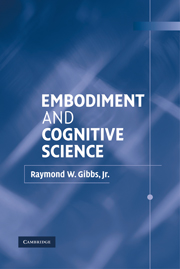Summary
A wonderful illustration of the importance of embodiment in ordinary concepts is evident in how Apache Indians in North America name the parts of automobiles (Basso, 1990). In the Couer d'Alene Indian language, the tires of a car or truck become “wrinkled feet,” a reference to the pattern on their treads. The new knowledge of automobiles is likened to the old knowledge of the body. Basso has described an entire system of naming the parts of motorized vehicles in the language of the Western Apache of east-central Arizona. The Western Apache have extended the names for the body parts of humans and animals to refer to the parts of automobiles and pickup trucks. In this structural metaphor, the hood became the nose (“bichih”), the headlights became the eyes (“bidaa”), and the windshield became the forehead (“bita”). The term for the face (“binii”) was extended to the whole area extending from the top of the windshield to the front bumper, so this term included the nose/hood and forehead/windshield as subparts. The front wheels became the hands and arms (“bigan”), and the rear wheels became the feet (“bikee”). All the items under the hood were classified as parts of the innards (“bibye”). Under the hood, the battery became the liver (“bizig”), the electrical wiring the veins (“bit qqs”), the gas tank the stomach (“bibid”), the distributor the heart (“bijii”), the radiator the lung (“bijii izole”), and the radiator hoses the intestines (“bich'i”).
- Type
- Chapter
- Information
- Embodiment and Cognitive Science , pp. 79 - 122Publisher: Cambridge University PressPrint publication year: 2005



